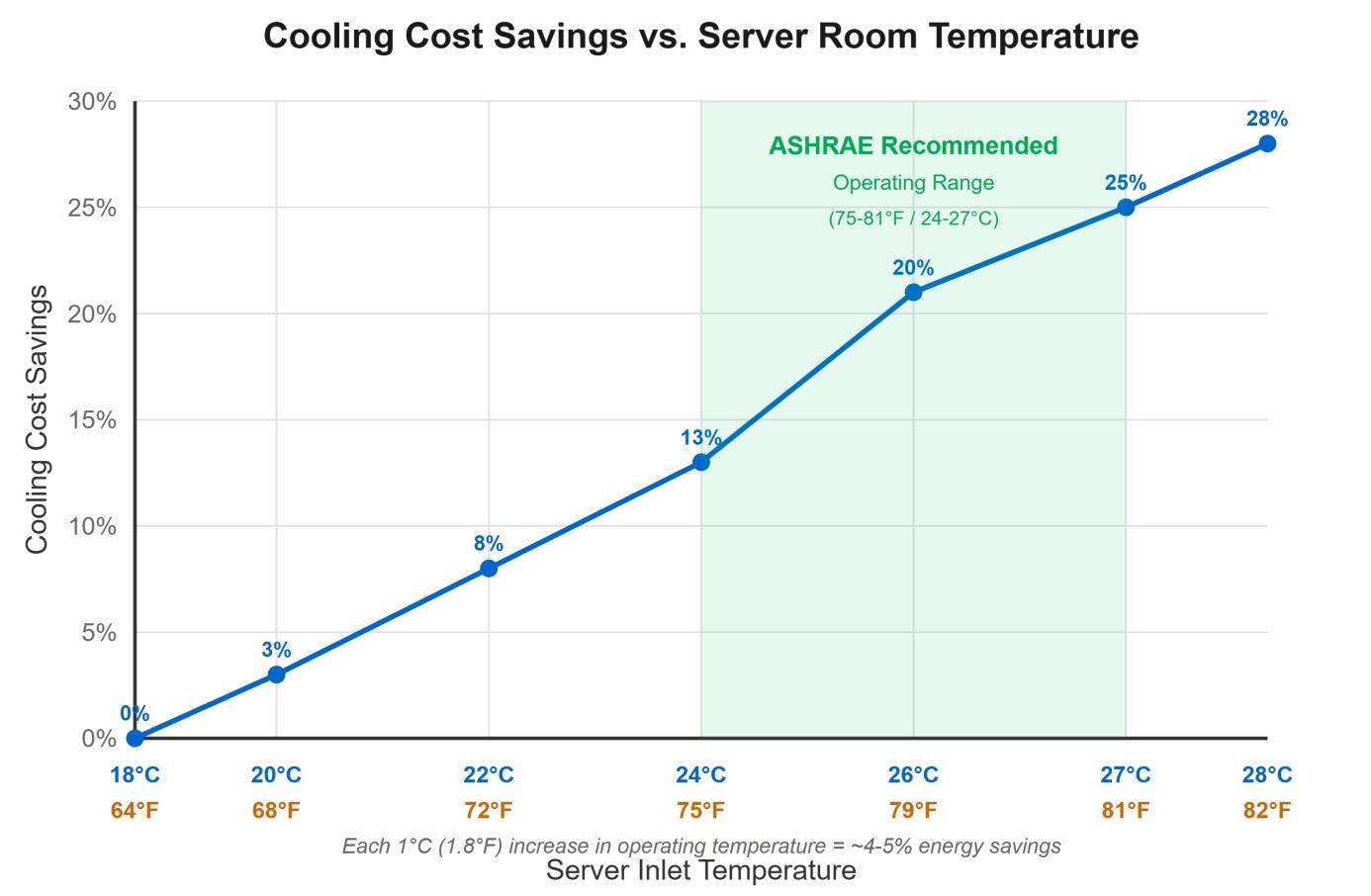PUE of 1.8? Temperature at 28 °C (82 °F)? If you’re not
tracking these numbers, your data center server room is likely burning money
for no reason. We’ll show you how to implement best practices for server room
maintenance, cut costs by tens of percent, and build a scalable infrastructure
ready for the future.
Managing a data center server room isn’t rocket science—as
long as you follow proven principles and regularly monitor key metrics. The
following practices will help you optimize operations, whether you're running a
small in-house server room or a large-scale data center. Let’s get straight to
it.
Efficient Data Center Server Room Management Requires a Skilled, Systematic Approach
Chaos in a server room isn’t just an aesthetic issue—it
directly affects cooling efficiency, maintenance speed, and scalability. Proper
spatial layout forms the foundation for all other optimizations.
The hot aisle/cold aisle configuration is the standard in
modern data centers. Servers are arranged so that their front sides (intaking
cool air) face the cold aisles, while the back sides (exhausting hot air) face
the hot aisles. This simple principle can improve cooling efficiency by up to
40% compared to a disorganized layout.
Cable management—instead of a tangled mess running in all
directions:
- Structured cabling uses vertical and horizontal trays.
- Color coding differentiates power, networking, and
management.
- A 30% capacity reserve in cable trays allows for future
expansion.
- Documenting each cable saves hours during troubleshooting.
Space planning is essential. Installing blanking panels
in unused rack slots prevents hot and cold air from mixing. Raised floors
create space for cool air distribution and hide cabling. A minimum aisle width
of 1.2 meters (3.9 feet) ensures safe access for technicians with equipment.
Server Room Cooling—A Science Worth Mastering
Every watt of server power generates an equivalent amount of
heat. Without efficient cooling, server room temperatures quickly exceed safe
limits and hardware begins to fail.
The optimal temperature range according to ASHRAE TC 9.9
recommendations:
- air inlet temperature: 18–27 °C (64–81 °F)
- relative humidity: 40–60 %
- maximum dew point: 15 °C (59 °F)
Operating at the higher end of the temperature range (25–27 °C
/ 77–81 °F) reduces cooling costs without significantly affecting hardware
reliability. Each additional degree translates to a 4–5% reduction in
cooling energy consumption.

Cooling System Types are chosen based on power density:
- CRAC units (Computer Room Air Conditioning) for low
to medium density
- In-row cooling for high density (above 10 kW per
rack)
- Liquid cooling for extreme densities (above 30 kW per rack)
Temperature monitoring and control requires a network of
sensors placed at critical points—air intake at servers, exhaust from hot
aisles, and the tops of racks. The DCIM system (Data Center
Infrastructure Management) integrates data from these sensors and automatically
adjusts cooling output based on current load.
Server Room Security—Protection Against Every Threat
Best practices for server room security combine physical
protection with cybersecurity. A single vulnerability can undermine all other
infrastructure investments.
Physical security starts at the entry door:
- biometric scanners or multi-level authentication with card
and PIN,
- a mantrap to prevent multiple people entering at once,
- VSS coverage of all angles, with recording retained for at
least 90 days,
- motion detectors linked to alarms outside working hours,
- round-the-clock security—ideally armed.
Fire protection requires a specialized approach.
Standard sprinklers can destroy hardware just as effectively as fire. The
solution lies in gas-based suppression systems (FM-200, Novec 1230) or
oxygen-reduction systems. VESDA (Very Early Smoke Detection
Apparatus) identifies fire risks in their earliest stages—well before
conventional detectors activate.
Environmental monitoring detects water leaks from
cooling systems or burst pipes. Sensors placed under raised flooring and around
cooling units trigger an alert upon detecting any liquid. Redundant power
supply with automatic switching and UPS systems sized for at
least 15 minutes of operation provides enough time for a safe shutdown or
diesel generator startup.
Scalability—Growth Without the Pain
The capacity of any data center server room can be quickly
exhausted without forward-looking planning. Best practices for server room
maintenance, therefore, include regular reviews of space and power utilization.
Modular design enables gradual expansion:
- pre-installed power distribution with a 50% reserve,
- network infrastructure scaled for 10× current traffic,
- zone-based cooling with the ability to add units as
needed,
- standardized racks and accessories throughout the server
room.
Documentation and usage monitoring provide a solid
basis for decision-making. DCIM systems track rack occupancy,
individual device power consumption, and thermal maps. Quarterly
audits identify inefficiently used hardware that could be virtualized or
decommissioned.
Server Room Management Pays Off Sooner Than You Think
Implementing the practices described can reduce the Total Cost of Ownership (TCO) of a server room by 20–40% within the first
two years. Start with a thermal audit and airflow optimization—these measures
require minimal investment and deliver immediate savings. A modern data center
server room with a PUE below 1.5 is not an unattainable goal, but the
result of systematic work based on proven methods.



Data Scientist
Join 360DigiTMGs Data Scientist Course in Jaipur. Learn AI, ML Python with hands-on training. Enroll now!